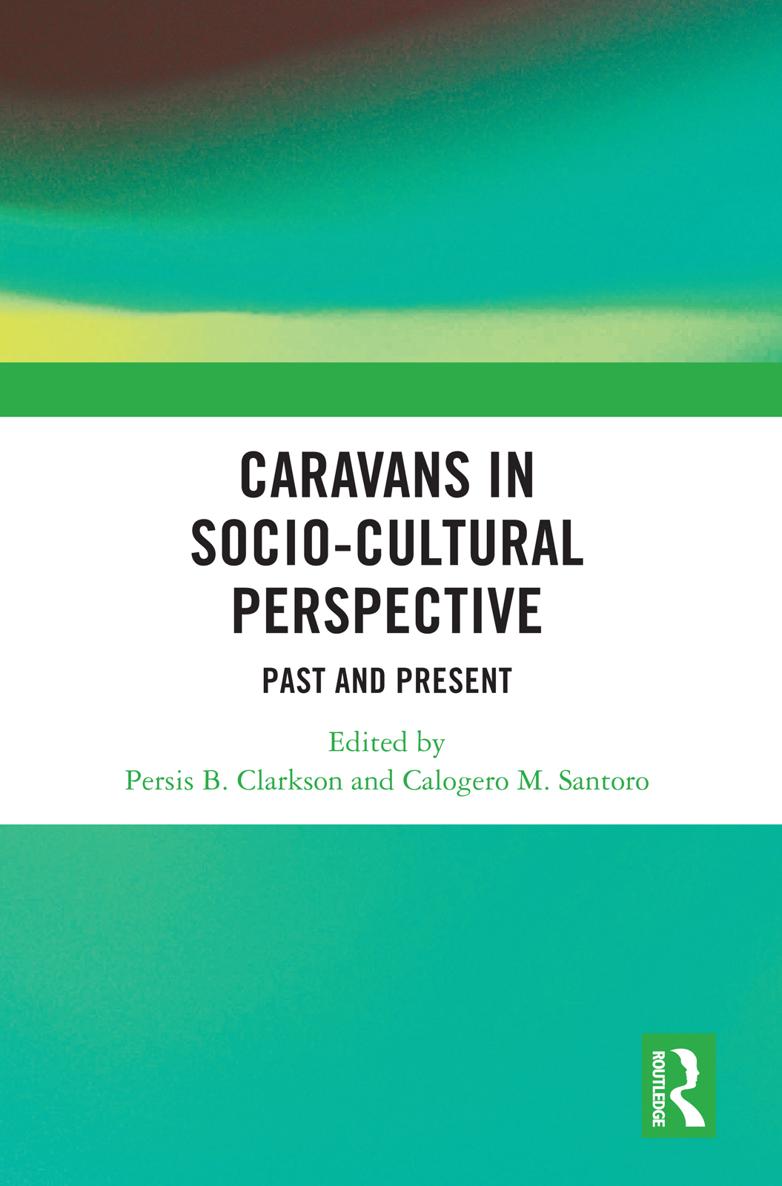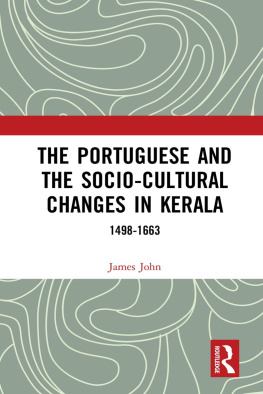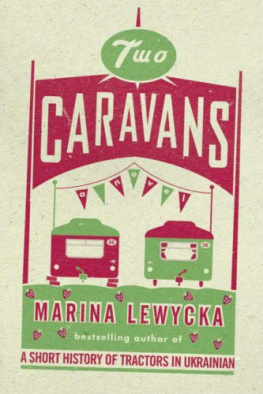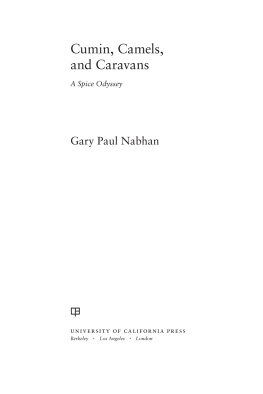Caravans in Socio-Cultural Perspective
Past and Present
Ranging across space and time, this book brings together up-to-date research on the socio-cultural phenomenon of caravans. It shows that caravans for long-distance trade in arid lands are present in both the Old and New Worlds. Alongside historical and archival records, ethnographic analyses of modern caravans provide theoretical frameworks for reconstructing aspects of ancient caravans such as behavior, ritual, and material culture. The volume reflects on the changing foci of caravan research and the future of caravans when memories of living caravanners are fading, and the fragile and remote nature of caravan-related sites means that they are at risk. It will be relevant to scholars from anthropology, archaeology, and history, and others with an interest in trade, travel, and nomadism.
Persis B. Clarkson s archaeological research spans the western deserts of the Americas, the tropical forests of Mesoamerica, and the boreal forests of Canada. She teaches anthropology at the University of Winnipeg in Manitoba, Canada, and is a temporary but keenly observant inhabitant of the Atacama Desert.
Calogero M. Santoro is based at the Instituto de Alta Investigacin at the Universidad de Tarapac in Arica, Chile, where multidisciplinary research ranges through social-cultural changes and climate variability from the Pleistocene to the present in hyperarid environments.
 0.0 Frontspiece
0.0 Frontspiece, Lecoq, A.
Camp section: (1) bags filled with salt or (2) grain piled together to form a windscreen; (3) ropes to tie the animals; (4) small ropes to maintain the goats; (5) layer of shepherds with a (6) pillow made of ropes or folded clothes, and blanket; (7) personal effects of the shepherd with flute and objects of worship; (8) bags for
tsampa; (9) provisions, (10) potato or rice; (11)
pathi: copper container of 7 liters used to measure salt or grain.
B.
Goats section: Goats tied in groups for morning milking C.
Fireplace section: (12) fireplace with an aluminum pan with buttered and salted tea for the meal or breakfast and (13) stones to sit down; (14) Small pieces of wood (15) beech, and (16) yak dung to light and maintain fire.
Caravans in Socio-Cultural Perspective
Past and Present
Edited by Persis B. Clarkson and Calogero M. Santoro
First published 2022
by Routledge
2 Park Square, Milton Park, Abingdon, Oxon OX14 4RN
and by Routledge
605 Third Avenue, New York, NY 10158
Routledge is an imprint of the Taylor & Francis Group, an informa business
2022 selection and editorial matter, Persis B. Clarkson and Calogero M. Santoro; individual chapters, the contributors.
The right of Persis B. Clarkson and Calogero M. Santoro to be identified as the authors of the editorial material, and of the authors for their individual chapters, has been asserted in accordance with sections 77 and 78 of the Copyright, Designs and Patents Act 1988.
All rights reserved. No part of this book may be reprinted or reproduced or utilised in any form or by any electronic, mechanical, or other means, now known or hereafter invented, including photocopying and recording, or in any information storage or retrieval system, without permission in writing from the publishers.
Trademark notice: Product or corporate names may be trademarks or registered trademarks, and are used only for identification and explanation without intent to infringe.
British Library Cataloguing-in-Publication Data
A catalogue record for this book is available from the British Library
Library of Congress Cataloging-in-Publication Data
A catalog record has been requested for this book
ISBN: 9780367772994 (hbk)
ISBN: 9781032016030 (pbk)
ISBN: 9781003179276 (ebk)
DOI: 10.4324/9781003179276
Typeset in Sabon
by Deanta Global Publishing Services, Chennai, India
Contents
Persis B. Clarkson and Calogero M. Santoro
Anthony F. Aveni
Luis Briones
Bibiana Vil
Axel E. Nielsen
Patrice Lecoq
Lidio M. Valdez, Katrina J. Bettcher, and J. Ernesto Valdez
Thomas F. Lynch
John Coleman Darnell
Viviana Siveroni
Aleksa K. Alaica, Luis Manuel Gonzlez La Rosa, Luis A. Muro Ynon, Gwyneth Gordon, and Kelly J. Knudson
Heiko Riemer and Frank Frster
Christian Mader, Markus Reindel, and Johny Isla
Scott C. Smith, Maribel Prez Arias, and Adolfo E. Prez Arias
Lautaro Nez and Luis Briones
Alvaro R. Martel
Figures
Collage made by seventh-grade students at the school of Santa Catalina, Jujuy, Argentina, in 2017
The main caravan routes between Cerrillos and the Tarija Valley showing the location of overnight campsites and rest areas
(a) Sketch map of the Yuraj Cruz rest area. (b) Caravan altars during the major kowaco
(a) Map of Nepal; (b) the barter system in Nepal
Llama caravans west of the Ayacucho Valley, central highlands region of Peru (photograph: Lidio Valdez)
(a) Large hito (road marker) atop Esquina Blanca, above Pueblo Rio Grande, intact and undisturbed, visible from a great distance. An intact olla found near the road here (T. Lynch 1993). (b) Another defining characteristic of Inca roadside construction in the Gran Despoblado, from the Atacama Basin southwards, at least where large stone slabs were available, is the positioning upright of slabs on either side of the doorway, as at Peine and here at Site Rio Grande 14 in this tambo reused as a corral in later times (T. Lynch 1993). (c) Llamas returning to Aiquina in single file. Even in open country, this is the customary and easiest way to drive llamas. Only one or two drovers are needed (T. Lynch 1983). (d) Loren Gaarder at the screen, with the Pampa de Lampas and Cordillera Huaywash in the background (T. Lynch 1983)
(a) Sometimes paired hitos, on either side of the Inca Road, are joined by a line of stones, perpendicular to the roadway, as if to demarcate construction or administrative districts. Here, in a remote corner of the Salar de Punta Negra, later travelers have not destroyed the demarcation line, but C. Sanhueza et al. have recently established (Sanhueza et al. 2020:Figures 3, 5) that my demarcation line across the road in Tocomar is in perfect alignment with the 21 June winter solstice sunrise and it is better interpreted in terms of sacred geography (T. Lynch 1985). (b) Even in the Gran Despoblado, Inca roads show evidence of engineering not characteristic of earlier or later pack roads and truck routes. Note the evenly inclined ascent on this road from the Quebrada Pajonales above the northeast sector of the Salar de Punta Negra (T. Lynch 1985). (c) South of Ro Frio, the Norte Grande landscape is truly barren. The paired hitos become small, although they are well preserved. Nevertheless, the roadbuilders persevered on to the Norte Chico and further south, sometimes following the old paths and informal roads. The route continued in use through colonial and republican times but was then abandoned until modern geological exploration and map-making (T. Lynch 1993). (d) Caravanners sometimes died en route. Before motorized transport, it was impractical to carry the bodies out, so the deceased man was buried enpampado. Not far from the Salar de Imilac, there is a memorial marking the burial of Victor Pastrana, who perished there on 14 May 1943. This grave was left undisturbed (T. Lynch 1985)

 0.0 Frontspiece, Lecoq, A. Camp section: (1) bags filled with salt or (2) grain piled together to form a windscreen; (3) ropes to tie the animals; (4) small ropes to maintain the goats; (5) layer of shepherds with a (6) pillow made of ropes or folded clothes, and blanket; (7) personal effects of the shepherd with flute and objects of worship; (8) bags for tsampa; (9) provisions, (10) potato or rice; (11) pathi: copper container of 7 liters used to measure salt or grain.
0.0 Frontspiece, Lecoq, A. Camp section: (1) bags filled with salt or (2) grain piled together to form a windscreen; (3) ropes to tie the animals; (4) small ropes to maintain the goats; (5) layer of shepherds with a (6) pillow made of ropes or folded clothes, and blanket; (7) personal effects of the shepherd with flute and objects of worship; (8) bags for tsampa; (9) provisions, (10) potato or rice; (11) pathi: copper container of 7 liters used to measure salt or grain.








